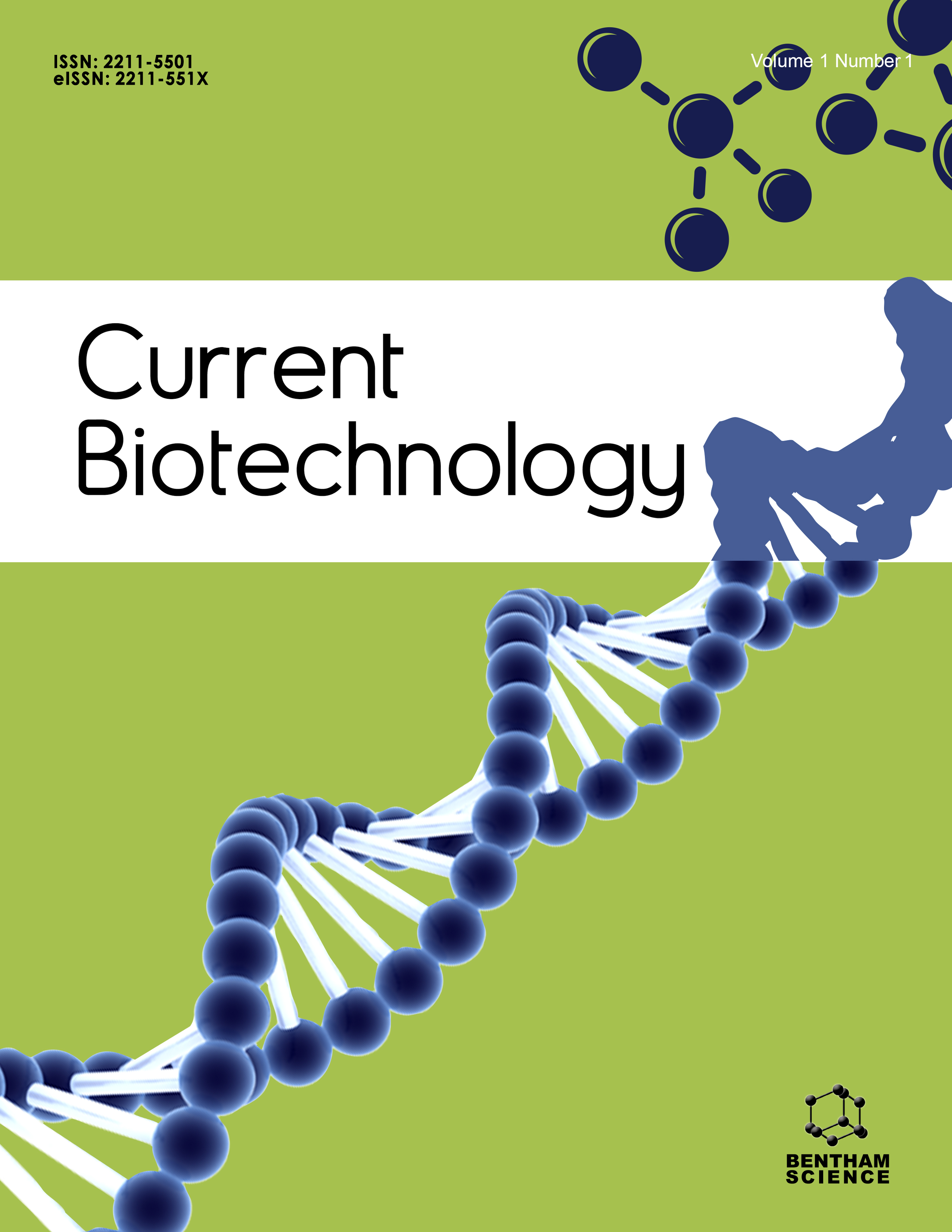- Home
- A-Z Publications
- Current Biotechnology
- Previous Issues
- Volume 3, Issue 3, 2014
Current Biotechnology - Volume 3, Issue 3, 2014
Volume 3, Issue 3, 2014
-
-
Immobilized Enzymes: Strategies for Overcoming the Substrate Diffusion- Limitation Problem
More LessAuthors: M.S. Mohy Eldin and D.G. MitaImmobilized enzymes offer many advantages over the free counterparts. These advantages include, but are not limited to, easy separation, reuse, induced stabilities and potential of continuous operation. However, the immobilization process at the same time causes some drawbacks including loss of catalytic activity of the immobilized enzymes. Many interpretations have been given to explain the reasons behind such drawback Read More
-
-
-
Molecular Imaging Aided Improvement in Drug Discovery and Development
More LessAuthors: Smrita Chaudhury, Bhushan Thakur, Subhoshree Chatterjee and Pritha RayThe current drug discovery and development platform is rapidly expanding with new classes of pharmaceuticals and novel biological information. The drug discovery and development process relies on the utilization of relevant and robust tools, methods, and models that are predictive of clinical effects in terms of diagnosis, prevention, therapy and prognosis. One of the methods that have gained prominence over the year Read More
-
-
-
Alkaline Serine Protease from Marine Bacillus flexus APCMST-RS2P: Purification and Characterization
More LessProtease enzyme from estuarine sediment bacterium Bacillus flexus was purified by using two steps such as ammonium sulphate precipitation (37.25% enzyme yield and 2.75 fold purification) and sephadex G-75 gel filtration chromatography (9.38% yield and 10.62 fold purification). Molecular weight of the purified protease detected was 44.3 kDa. The protease activity was found to be maximum at pH 8.0 and retaine Read More
-
-
-
New Promoters to Improve Heterologous Protein Production in Aspergillus vadensis
More LessAuthors: Helena Culleton, Ourdia Bouzid, Vincent A. McKie and Ronald P. de VriesAspergillus is a widely used host organism for the industrial production of homologous and heterologous proteins. Although Aspergillus niger is most commonly used, a close relative of this species, Aspergillus vadensis, has been suggested as a suitable and more favourable alternative due in part, to the low levels of extracellular proteases which it produces. Despite much progress being made in the hyper production of homologou Read More
-
-
-
Overexpression of XlnR Regulated Hemicellulase-Encoding Genes in Aspergillus vadensis
More LessAuthors: Ourdia Bouzid and Ronald P. de VriesAspergillus vadensis is a close relative of Aspergillus niger and is particularly interesting for hemicellulase production as it does not produce extracellular proteases. The main regulator driving hemicellulase production in Aspergilli and other fungi is XlnR and overexpression of this regulator leads to increased hemicellulase levels in some species. To increase hemicellulase production in A. vadensis strains were gene Read More
-
-
-
Characterization and Evaluation of Cellulases and Hemicellulases Produced by Diverse Fungal Strains
More LessAuthors: Amandeep Monga and B.S. ChadhaSixteen mesophilic fungal strains of Aspergilli (10) and Penicilli (3) and Cochliobolus lunatus isolated from deciduous green forests and wetlands were characterized at molecular level and screened for cellulases (endoglucanase, β- glucosidase (cellobiase), cellobiohydrolase (CBHI/EGI) and FPase) and hemicellulase (xylanase, α -Larabinofuranosidase, β -xylosidase, acetyl xylan esterase and feruloyl esterase) production on ri Read More
-
-
-
Expression, Purification and In Silico Studies of Cold Resistant Protein from Plant Growth Promoting Ps fluorescens Mutant CRPF1
More LessAuthors: Mahejibin Khan and Reeta GoelThe production of cold shock proteins constitutes an adaptive response in psychrotrophic and psychrophillic microorganisms to allow survival after cold shock. In the present study a small 10kDa cold resistant protein (CRP) was expressed and purified by immuno-affinty chromatography from CRPF1, a cold resistant mutant of Pseudomonas fluorescens. Sequence analysis and homology studies of cold resistant gene revealed 9 Read More
-
Most Read This Month
Article
content/journals/cbiot
Journal
10
5
false
en


